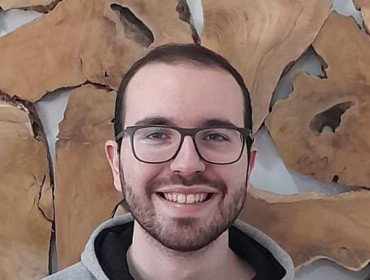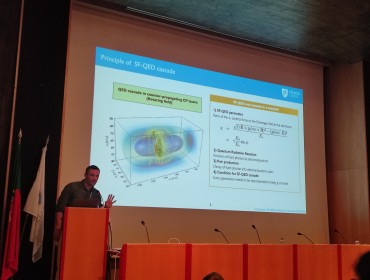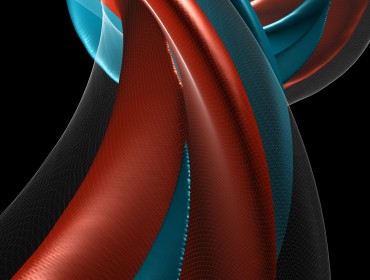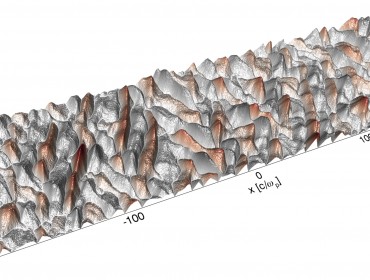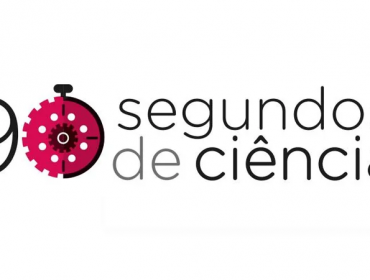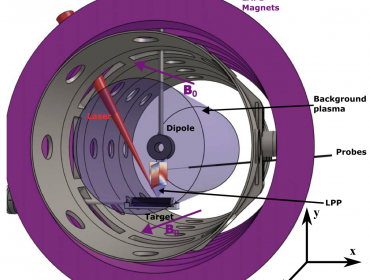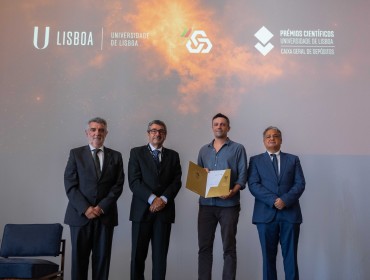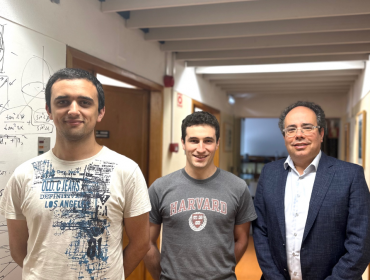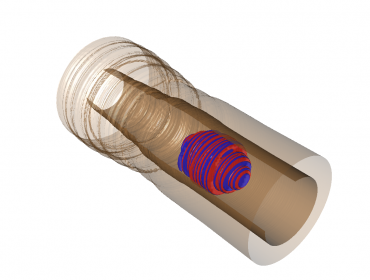-
José M received scholarship to support his studies in Quantum Computing
Read moreJosé M, a master’s student in epp, has been awarded the ‘Talentos Quânticos’ scholarship. This initiative by the Portuguese Quantum Institute is designed to support young researchers in the field of Quantum Science and Technologies, including Quantum Computing, by providing financial assistance for research on a related topic. Congratulations to José!
October 16, 2024 -
ECLIM 2024 at IST
Read moreLast Saturday, the 37th European Conference on Laser Interaction with Matter (ECLIM 2024) was successfully concluded. GoLP was part of the organization and some team members also presented their work. Our GoLP members Sofiia P, Lucas A, Lucas I, Óscar A, Zahra M, Pablo B, Robert B, Bernardo B, Camilla W, Rafael A, Anthony MB and Filipe DC presented a poster, while Chiara B, Thales S, Thomas G and Marija V gave a talk.
Here are some pictures from the event:
September 23, 2024 -
Epp members at 21st International Congress on Plasma Physics in Ghent
Read moreOur team members Róbert Babjak and Thales Silva attended the 21st International Congress on Plasma Physics held on 8th to 13th September in Ghent, Belgium, to present invited talks about their recent work. Thales presented his recent results on the generation of unstable plasmas with laser-matter interactions and Róbert presented his results on direct laser acceleration mechanisms and its possibility as a high-brilliance gamma-ray source.
September 17, 2024 -
Epp team members awarded 20 million core-hour allocation at Marenostrum V
Read moreEpp team members were awarded with a 20 million core-hour allocation at the TIER-0 supercomputer Marenostrum V at the Barcelona Supercomputer Center. The allocation was granted by Rede Nacional de Computação Avançada (RNCA). The project “Modeling Extreme Plasma Accelerators and Light Sources” will investigate advanced plasma accelerators and light sources in combination with structured light, focusing on high-quality electron acceleration and superradiant emission in plasma-based accelerators.
September 5, 2024 -
GoLP Awarded 9 Million CPU Hours on Leonardo Supercomputer
Read moreOur research group has been awarded 9 million CPU hours on Cineca’s Leonardo supercomputer in Italy. This significant allocation in Leonardo, one of Europe’s leading supercomputers, will support our efforts in the understanding of plasma instabilities in exotic scenarios. The allocation is led by Thales Silva as PI.
Figure: Simulation result of the magnetic field from the Weibel instability in exotic plasmas
July 25, 2024 -
Jorge V speaking about plasma accelerators on Antena 1
Read moreJorge V, research member of GoLP, will be talking about his work on ’90 segundos de ciência’. In this interview, Jorge will speak about plasma accelerators, starting from their advantages to their possible applications. The episode will be streamed on the 23rd of July, at 5 pm (WET) and with a replay on the 24th of July at 11 am (WET).
July 15, 2024 -
Lunar Mini-Magnetospheres: New Insights into Magnetic Reconnection
Read moreIn a study published in The Astrophysical Journal, researchers from the University of California, Los Angeles, and the Instituto Superior Técnico, Universidade de Lisboa, have investigated magnetic reconnection in lunar-relevant mini-magnetospheres. The team, including Filipe D. Cruz, Fábio Cruz, and Luis O. Silva from the Instituto Superior Técnico, used advanced laboratory experiments and particle-in-cell simulations using the code OSIRIS to uncover critical insights into the microphysics of collisionless space plasmas. Their findings reveal the formation of Hall fields and electron-only reconnection driven by kinetic effects, contributing to our understanding of space plasma dynamics near the lunar surface.
July 10, 2024 -
GoLP member Thomas Grismayer has received an honorable mention in “the University of Lisbon/Caixa Geral dos Depósitos Scientific Awards competition” – Edition 2024.
Read moreThe University of Lisbon (ULisboa), with the support of Caixa Geral de Depósitos, awards the annual University of Lisbon/Caixa Geral de Depósitos Scientific Awards, which aim to reward scientific research activity and encourage the practice of international publication of recognized quality and impact.
Some pictures from the event:
June 26, 2024 -
Successful Generation of Electron-Positron Plasmas: New Paper Published and Featured in Público
Read moreThe experimental results from the Fireball (HRMT-62) project, achieved last year at CERN’s SPS HiRadMat facility, have now been published in Nature Communications and featured in the prominent Portuguese newspaper, Público. Our team, including Filipe Cruz, Pablo J. Bilbao, and Luis O. Silva, played a key role by providing numerical simulations that helped design the experimental platform. Under the leadership of Charles Arrowsmith and Gianluca Gregori from Oxford University, the project brought together researchers from institutions such as Lawrence Livermore National Laboratory, Rochester University, University of Iceland, Max Planck Institute, and IST, showcasing a strong international collaboration.
The experiment focused on generating high-density, quasi-neutral electron-positron plasmas by directing a 440 GeV/c proton beam at a specially designed target. This effort marks a significant milestone, as it is the first successful creation of such plasmas in a controlled laboratory setting. The data collected revealed that the generated electron-positron beams…
June 26, 2024 -
New publication in PRL by GoLP members demonstrates high-charge alternative to laser-wakefield acceleration
Read moreA team of researchers from IST has recently published a paper entitled: “Direct laser acceleration in underdense plasmas with multi-PW lasers: A path to high-charge, GeV class electron bunches.” in the prestigious journal Physical Review Letters. The work was done in collaboration with researchers from the University of Michigan and University of California San Diego.
The most powerful lasers in the world can accelerate electrons to extreme energies, making them almost as fast as light. To accomplish this, it is necessary to ensure stable propagation of such laser pulses over tens of centimetres of plasma, which can be very challenging. By changing the acceleration strategy, the team has demonstrated how to reduce the typical acceleration distance to just a few millimetres and identified the possibility of accelerating a thousand times more particles than in other laser-based schemes. This micro-accelerator holds a potential to decrease the cost and size of…
June 20, 2024
extreme plasma physics > News

